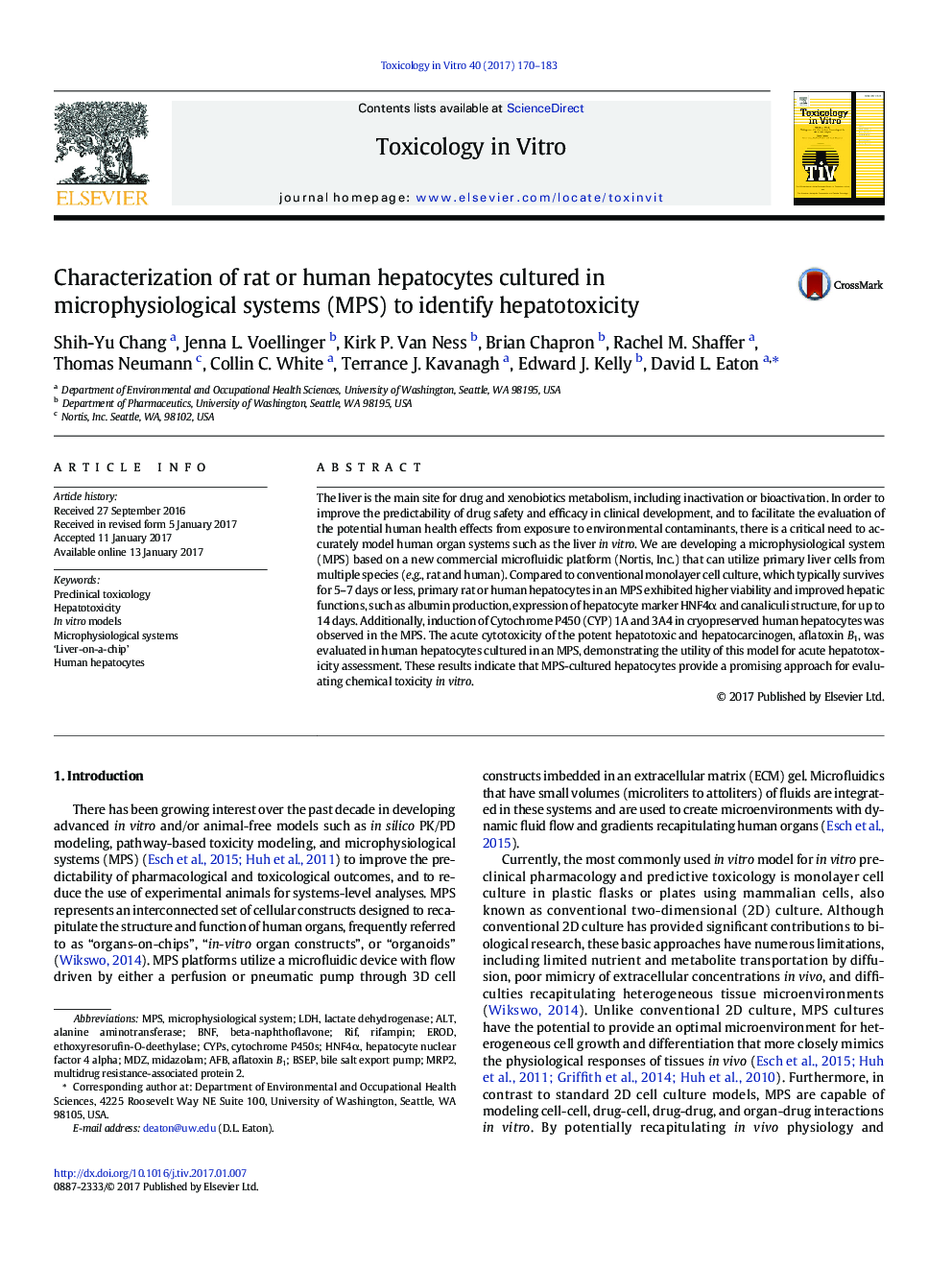| Article ID | Journal | Published Year | Pages | File Type |
|---|---|---|---|---|
| 5562706 | Toxicology in Vitro | 2017 | 14 Pages |
â¢A novel in vitro liver Microphysiological Systems (MPS) culture is described.â¢Liver MPS cultures have higher viability and functionality than 2D cultures.â¢Hepatotoxicity of aflatoxin B1 was evaluated in liver MPS as proof-of-principle.
The liver is the main site for drug and xenobiotics metabolism, including inactivation or bioactivation. In order to improve the predictability of drug safety and efficacy in clinical development, and to facilitate the evaluation of the potential human health effects from exposure to environmental contaminants, there is a critical need to accurately model human organ systems such as the liver in vitro. We are developing a microphysiological system (MPS) based on a new commercial microfluidic platform (Nortis, Inc.) that can utilize primary liver cells from multiple species (e.g., rat and human). Compared to conventional monolayer cell culture, which typically survives for 5-7 days or less, primary rat or human hepatocytes in an MPS exhibited higher viability and improved hepatic functions, such as albumin production, expression of hepatocyte marker HNF4α and canaliculi structure, for up to 14 days. Additionally, induction of Cytochrome P450 (CYP) 1A and 3A4 in cryopreserved human hepatocytes was observed in the MPS. The acute cytotoxicity of the potent hepatotoxic and hepatocarcinogen, aflatoxin B1, was evaluated in human hepatocytes cultured in an MPS, demonstrating the utility of this model for acute hepatotoxicity assessment. These results indicate that MPS-cultured hepatocytes provide a promising approach for evaluating chemical toxicity in vitro.
